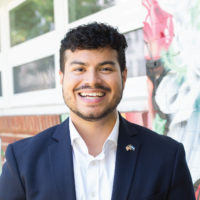March 24, 2020
Understanding Federal Action on COVID-19 and Potential Next Steps
This past week Congress passed and the President signed the Families First Coronavirus Response Act (FFCRA), which takes some first steps to combat current public health and economic dangers. Congress is also expected to act on additional legislation to provide direct payments to families and financial assistance to businesses in the coming days. Yet it is clear that more needs to be done to help protect families’ health and financial security during this time of uncertainty. This analysis summarizes some of the elements included in the most recent legislation, identifies ways that Virginia should act to take full advantage of the federal legislation, and highlights national resources for next steps that can be taken to strengthen the response to COVID-19.

COVID-19 Testing
The FFCRA requires states to cover testing, services, and treatment of COVID-19 for Medicaid/CHIP enrollees without cost-sharing in order to receive the enhanced federal assistance proposed in the legislation. The stimulus package also includes $1 billion for a national health care fund that will pay for COVID-19 testing for uninsured individuals who do not qualify for Medicaid. This national fund will reimburse testing labs directly. However, any doctor’s appointments or treatment that results from an uninsured individual testing positive for COVID-19 is not covered in FFCRA. This is a state option which Virginia should pursue and requires the state to submit a Medicaid state plan amendment to utilize this new benefit.
Paid Sick Leave
The legislation includes paid sick leave requirements during public health emergencies for people who meet certain criteria. The provision allows for 80 hours (10 work days) paid sick leave for those who are:
- experiencing symptoms and seeking or awaiting diagnosis,
- complying with recommendations from a public health official, or
- caring for someone who is self-isolating due to a confirmed diagnosis or who is experiencing symptoms.
For someone to obtain paid sick leave, they have to be employed by either a public employer or a private employer with fewer than 500 employees. The U.S. Department of Labor can exercise discretion to exempt emergency responders, health care workers, and employees of workplaces with 50 employees or less who care for children whose school is closed. When sick leave is taken for the purpose of caring for an individual or child, which could be due to school closure, the rate of pay is reduced to two-thirds of regular pay or capped at the maximum amount. The maximum payment is $511 per day or $5,110 total for self-care, while the maximum payment for care of others is $200 per day or $2,000 total. Employers would be reimbursed the cost of employee leave through a tax credit.
Research has shown that paid leave programs reduce the transmission of viruses. The federal government or Virginia can take further steps to protect public health and make paid sick leave more inclusive. Congress can choose to enact emergency paid sick leave programs that cover all working people in workplaces of all sizes. The program could mandate at least 10 work days of paid sick leave, regardless of a worker’s accrued leave. Notably, this still falls short of the 14 day self-quarantine period recommended for individuals that have come into contact with the COVID-19 virus.
Paid Family and Medical Leave

The FFCRA amends the federal Family and Medical Leave Act to allow some workers to access public health emergency leave if they are unable to work or telework due to the need to care for a child whose school is closed or if their child care provider is unavailable. To be eligible, the individual’s employer must have fewer than 500 employees, and they must have been employed for at least 30 days.
Similar to the new federal paid sick leave policy, the Secretary of Labor has authority to exclude health care workers, emergency responders, and businesses with fewer than 50 employees. Workers would be eligible for up to 12 weeks of leave. However, the first 10 days would be unpaid, with workers having the option to substitute in existing leave they may have accrued. The employer is required to pay after 10 days, at an amount no less than two-thirds of the employees regular rate but not to exceed $200 a day or $10,000 overall. Employers would be reimbursed the cost of employee leave through a tax credit.
While the ability to take time off to care is important for all, the opportunity to do so is less available to certain working people. Low wage workers employed by large companies are likely left with little to no options for long-term paid medical leave. Only 11% of the lowest wage workers have access to paid medical leave in the form of short-term disability insurance compared to 67% for the highest paid workers. It also fails to provide leave for caregivers of older adults and people with disabilities whose regular daily caregiving arrangements have closed. Finally, this extended paid leave does not apply to individuals who need to take time off due to being sick or taking care of another dependent who does not go to school or child care.
Medicaid & ACA Marketplace
The FFCRA also provides funding to shore up state Medicaid programs to better respond to the health crisis by increasing Federal Medical Assistant Percentages (FMAP) rates, which is the rate at which federal funding matches state funding. The 6.2 percentage point boost in FMAP funding means Virginia will receive approximately an additional $620 million dollars from this stimulus package.
States accepting this additional funding will not be able to cancel coverage to any existing Medicaid members during the public health emergency period, unless the individual ends coverage or moves to another state. This provision is vital in order to keep administrative time and effort focused on processing new applications in the face of shifting employment and income status for many Virginia families.
One area the FFCRA package does not address is the ACA individual marketplace. The traditional enrollment period for 2020 health coverage for uninsured individuals who don’t qualify for Medicaid — known as “open enrollment” — ended in mid-December 2019. A special enrollment period to allow individuals to enroll in comprehensive coverage through the marketplace is needed as people begin to reassess their health coverage options.
Unemployment Insurance
The FFCRA authorized $1 billion to support state unemployment insurance (UI) systems. The first $500 million will be used to help states cover the administrative costs stemming from a higher workload, so long as the states meet certain requirements aimed at increasing UI uptake. For example, states must ensure that all employers inform their employees about the availability of unemployment insurance at the time of separation. The FFCRA also requires states to notify applicants when a claim for unemployment insurance is received and provide assistance to help ensure the successful processing of the application.
The second $500 milion will take the form of emergency administration grants and will go to states that experience at least a 10 percent increase in unemployment compensation claims, relative to the same quarter in the previous calendar year. To receive this funding, states need to take certain COVID-19 related emergency steps that relax UI eligibility requirements. These steps include temporarily waiving work search requirements, eliminating the typical one-week waiting period, and communicating to employers directly affected by COVID-19 that their UI tax rate will not increase.
The legislation also requires states, within one year, to complete an analysis of their UI recipiency rate (the percentage of unemployed workers who are receiving UI benefits) and describe actions they are taking to connect more impacted individuals to UI. This must be a priority for Virginia, which consistently has a UI recipiency rate below the national average. Because one of the main goals of the UI system is to help keep workers and communities afloat during economic downturns, a low recipiency rate undermines the overall effectiveness of the UI system and puts the economy at greater risk.
Before this new legislation, the U.S. Department of Labor issued guidance on March 12 outlining flexibility that states have in administering their UI systems in response to COVID-19. The federal guidance permits states to pay benefits where:
- An employer temporarily ceases operations due to COVID-19, preventing employees from coming to work;
- An individual is quarantined with the expectation of returning to work after the quarantine is over; and
- An individual leaves employment due to a risk of exposure or infection or to care for a family member. In addition, federal law does not require an employee to quit in order to receive benefits due to the impact of COVID-19.
On March 17, Gov. Northam also expanded eligibility for unemployment insurance in Virginia.
Food Assistance
The FFCRA provides additional federal resources to the Supplemental Nutrition Assistance Program (SNAP) and other nutrition programs to expand food access for families during the current public health emergency. The bill expands SNAP benefits to households with children who attend a school that is closed and who would otherwise receive free or reduced-price meals. The legislation also gives school administrators flexibility in partnership with community-based organizations and child care providers to serve meals while allowing for social distancing.
FFCRA also temporarily waives certain restrictions on food assistance. The three-month time limit on SNAP benefits for unemployed adults under age 50 without children has been temporarily waived. Virginia has already been approved for a waiver expanding access to the Special Supplemental Nutrition Program for Women, Infants, and Children (WIC) allowing for remote enrollment and services while clinics are closed.
In addition to ensuring access to meals, these policies also help the economy. SNAP benefits are one of the fastest and most effective forms of economic stimulus. Low-income individuals generally spend their income meeting daily needs such as shelter, food, and transportation. Every dollar in SNAP that a family with low income receives enables the family to spend an additional dollar on food or other items. To further strengthen these benefits, Congress should consider additional steps, such as a 15% increase in the SNAP maximum allotment, equal to approximately $25 per person per month.
Going Forward
There is much to be done to support the physical and financial well-being of Virginia families and the economy as we move forward together during this difficult time. This includes increasing access to comprehensive paid leave, strengthening UI benefits, and ensuring that temporary changes in eligibility remain in place while the economy is impacted by COVID-19 and measures are being taken to slow the spread of the virus. TCI staff will continue to provide resources and information as the federal and state governments take action in the coming days, and will continue to advocate for robust efforts that will directly help impacted families and assist states with funding essential services such as health care, education, and safety net programs.
Categories:
Budget & Revenue, Economic Opportunity, Health Care



